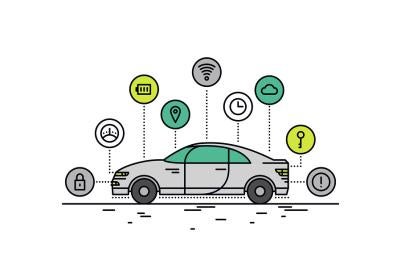The list of everyday technologies pioneered or developed by the military before being adapted to civilian applications is a lengthy one: GPS, microwave ovens, jet engines, and radar are just some common examples. Could autonomous cars and vehicle-to-infrastructure, or V2I, communications be some of the next technologies to get a boost from military research and development?
Starting this summer, the U.S. Army is planning to deploy a road test of convoys with V2I technology along a stretch of I-69 in Michigan. The road test will involve truck convoys with at least four vehicles apiece, with receivers that communicate with roadside transponders set alongside the highway. The transponders will be used to relay traffic condition information, like lane closures and speed limit information, to members of the convoy.
Meanwhile, the Army’s Tank Automotive Research, Development and Engineering Center, or TARDEC, is working on what could be the next step for Army convoys: autonomous technology that allows supply trucks to operate without human intervention in either on-road or off-road applications. The Army sees a potential benefit to its operations by either reducing the manpower needed for logistics tasks—as TARDEC’s chief roboticist put it in an interview with Ward’s Automotive, “unlike humans, robots don’t get tired”—or by allowing machines to operate trucks in dangerous environments.
The potential benefit to civilian applications is both direct and indirect. As part of its research into V2I and autonomous technologies, the Army is looking to work with civilian research initiatives like the University of Michigan’s Mcity project, which could provide both TARDEC and Mcity with new opportunities to develop and test new technologies. And as the Army rolls out this technology, its civilian partners should get new, concrete information about how it behaves in the real world, information that may be difficult to gather in the current regulatory environment without government backing. While autonomous vehicle technology will almost certainly debut with or without the Army’s help, TARDEC and the Army’s deployment of a fleet of autonomous vehicles provides an opportunity to help accelerate this debut, and improve the technology when it arrives at civilian dealerships or commercial fleets.



 i
i


